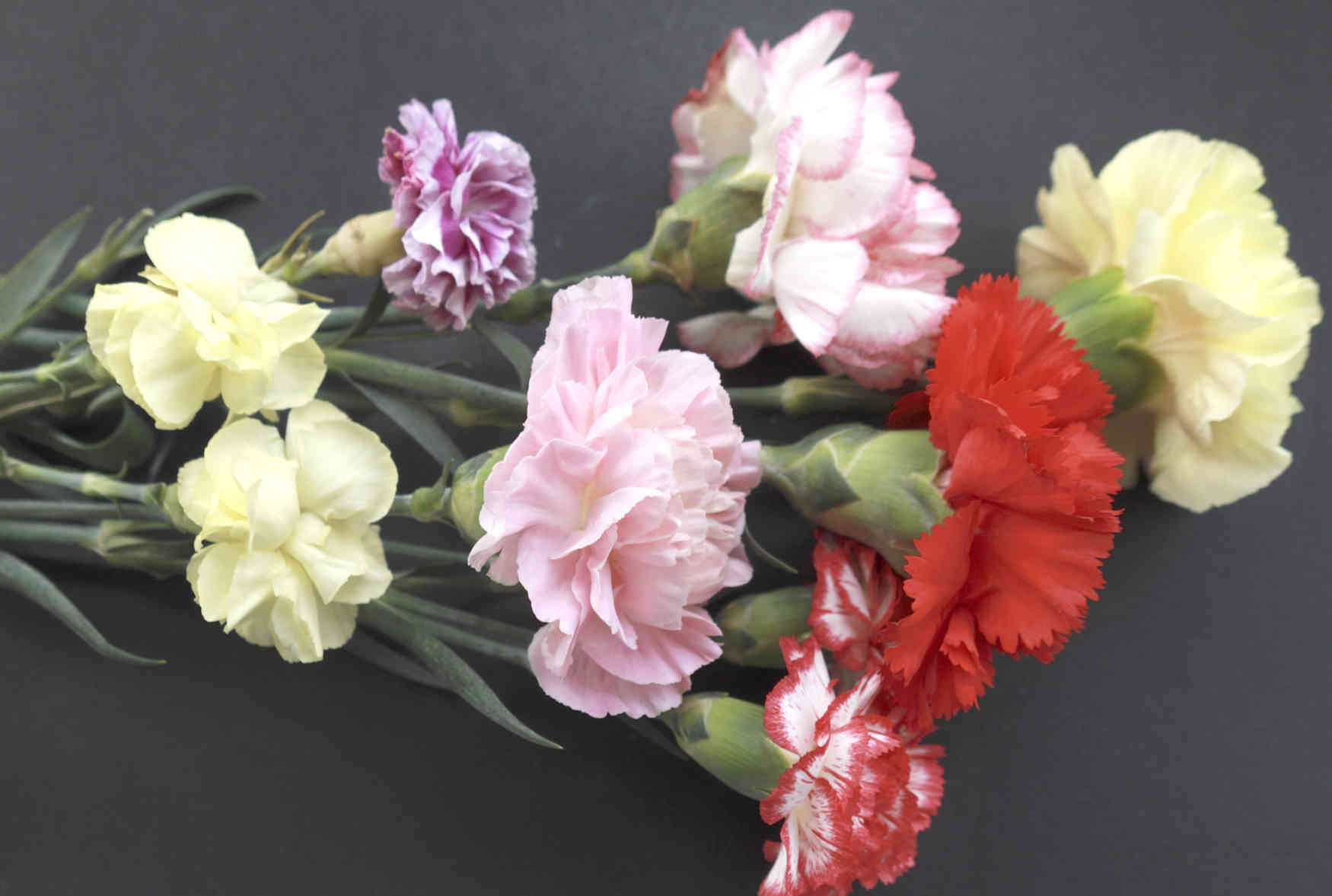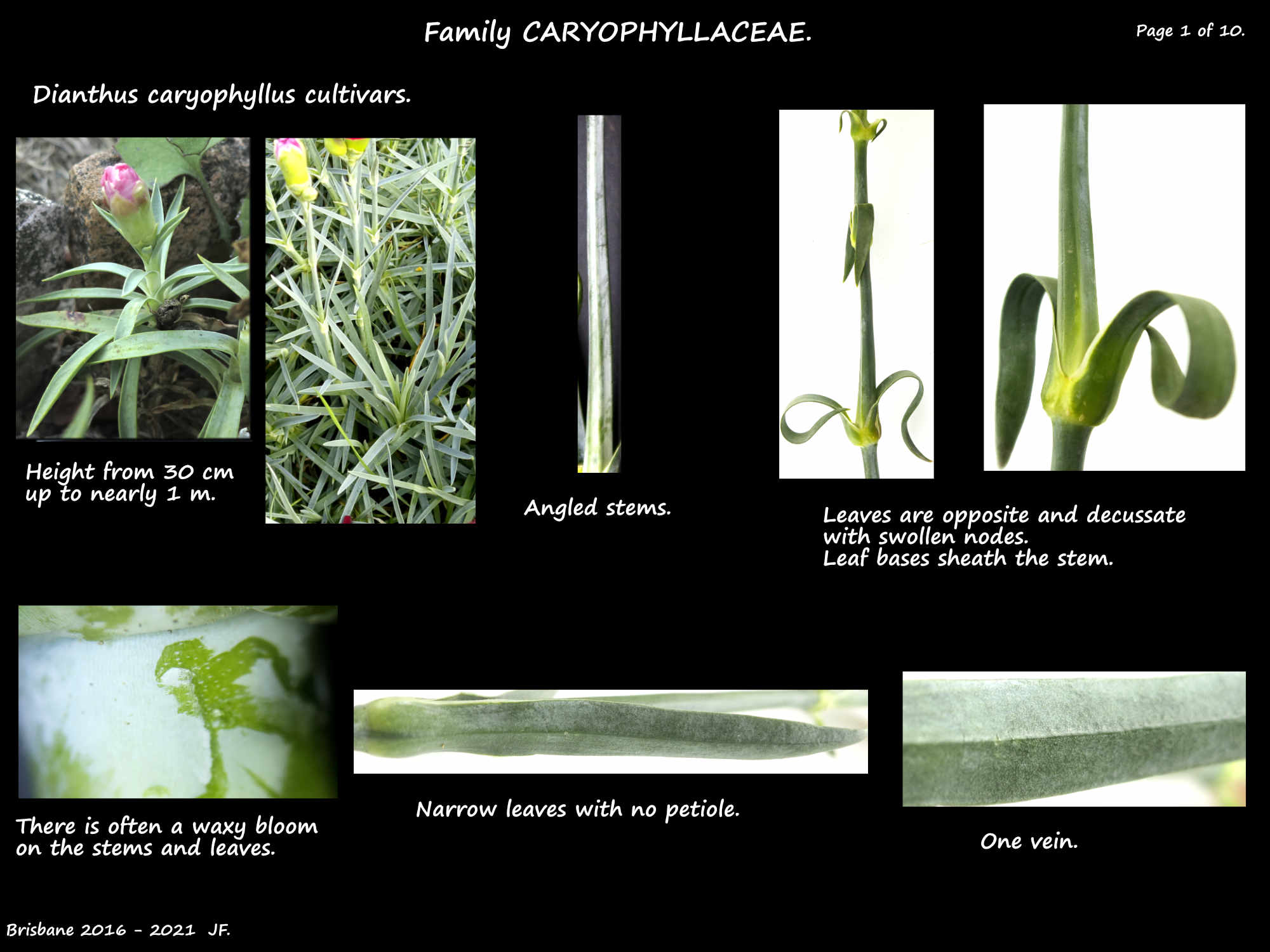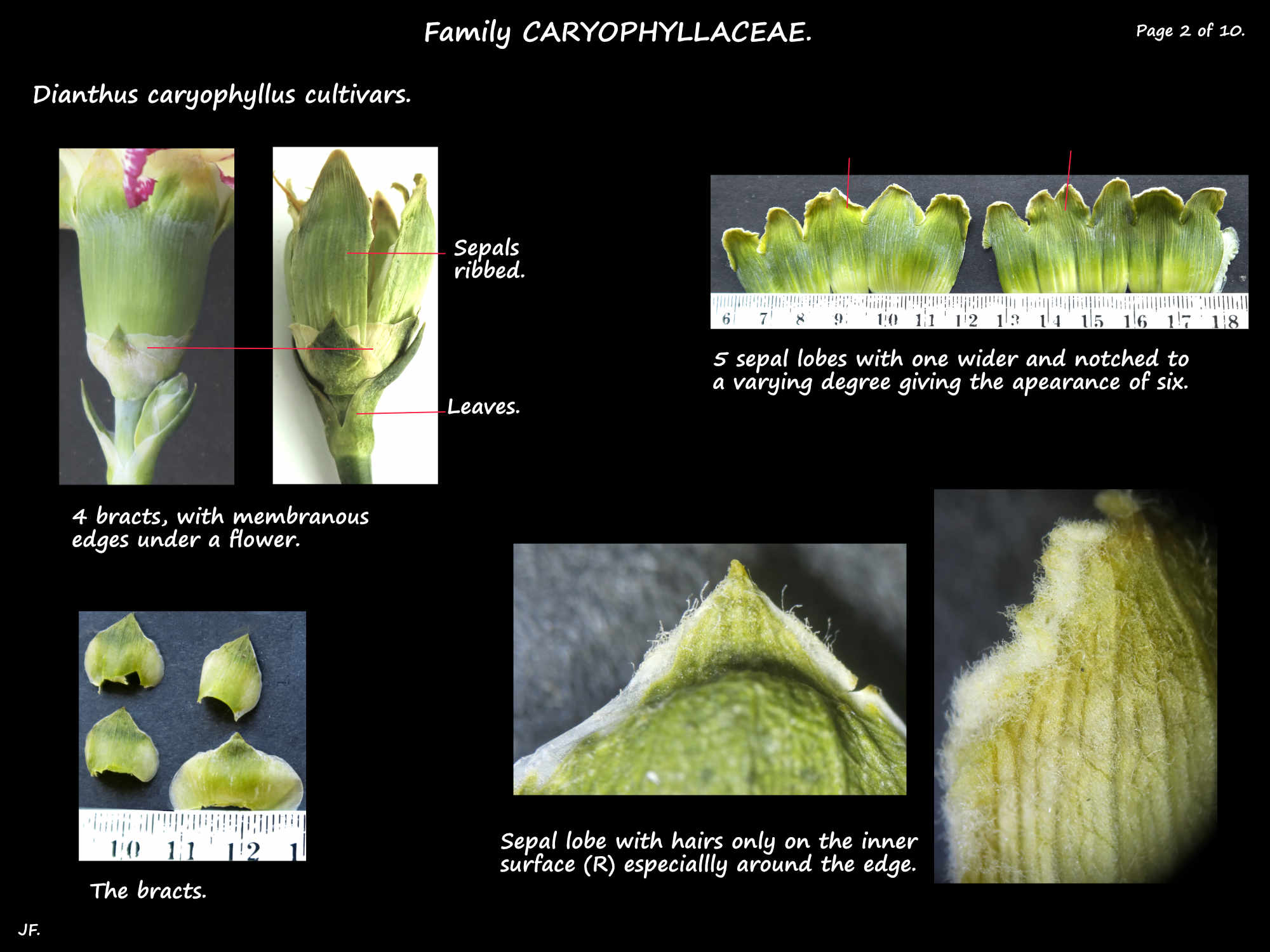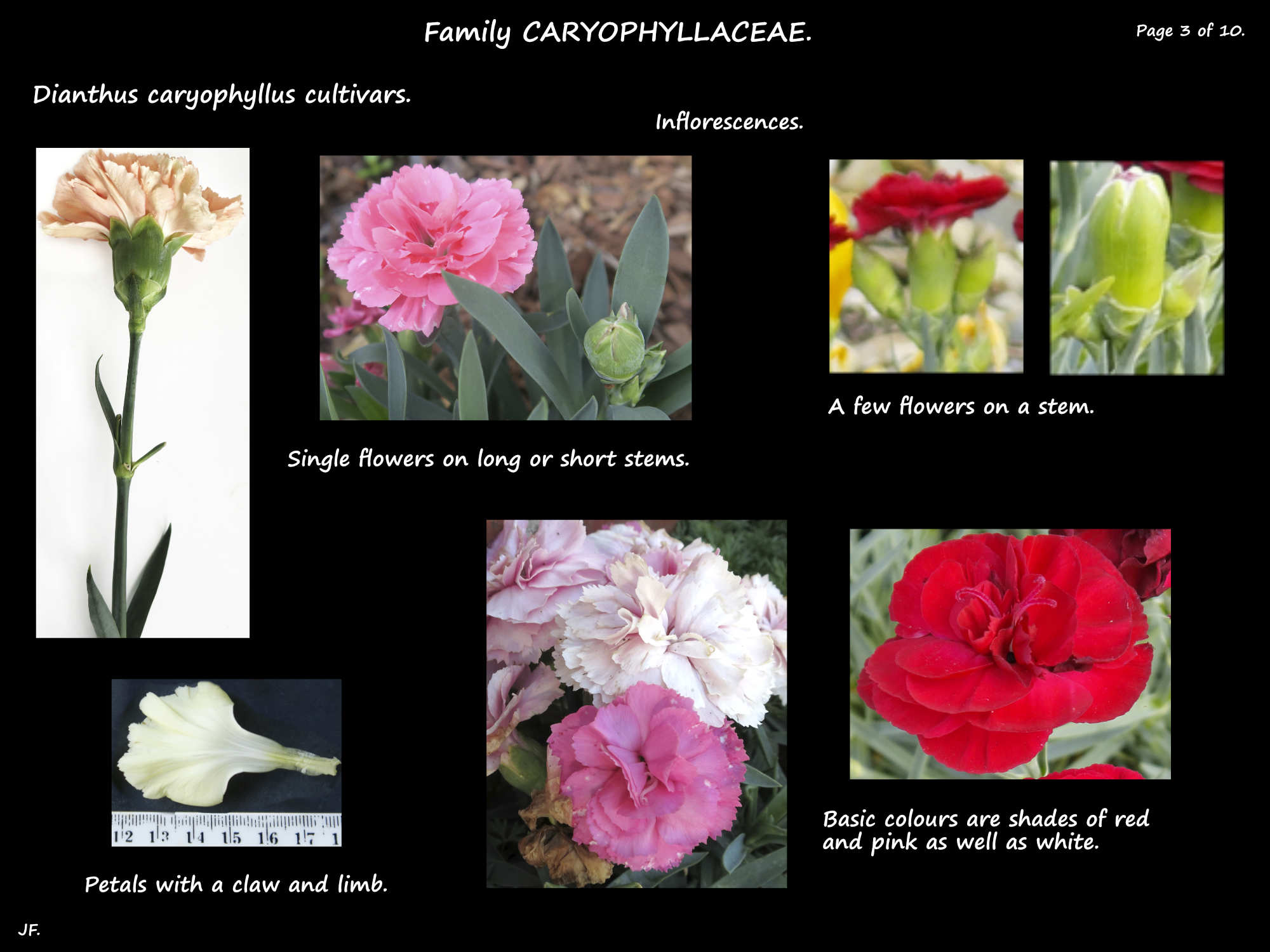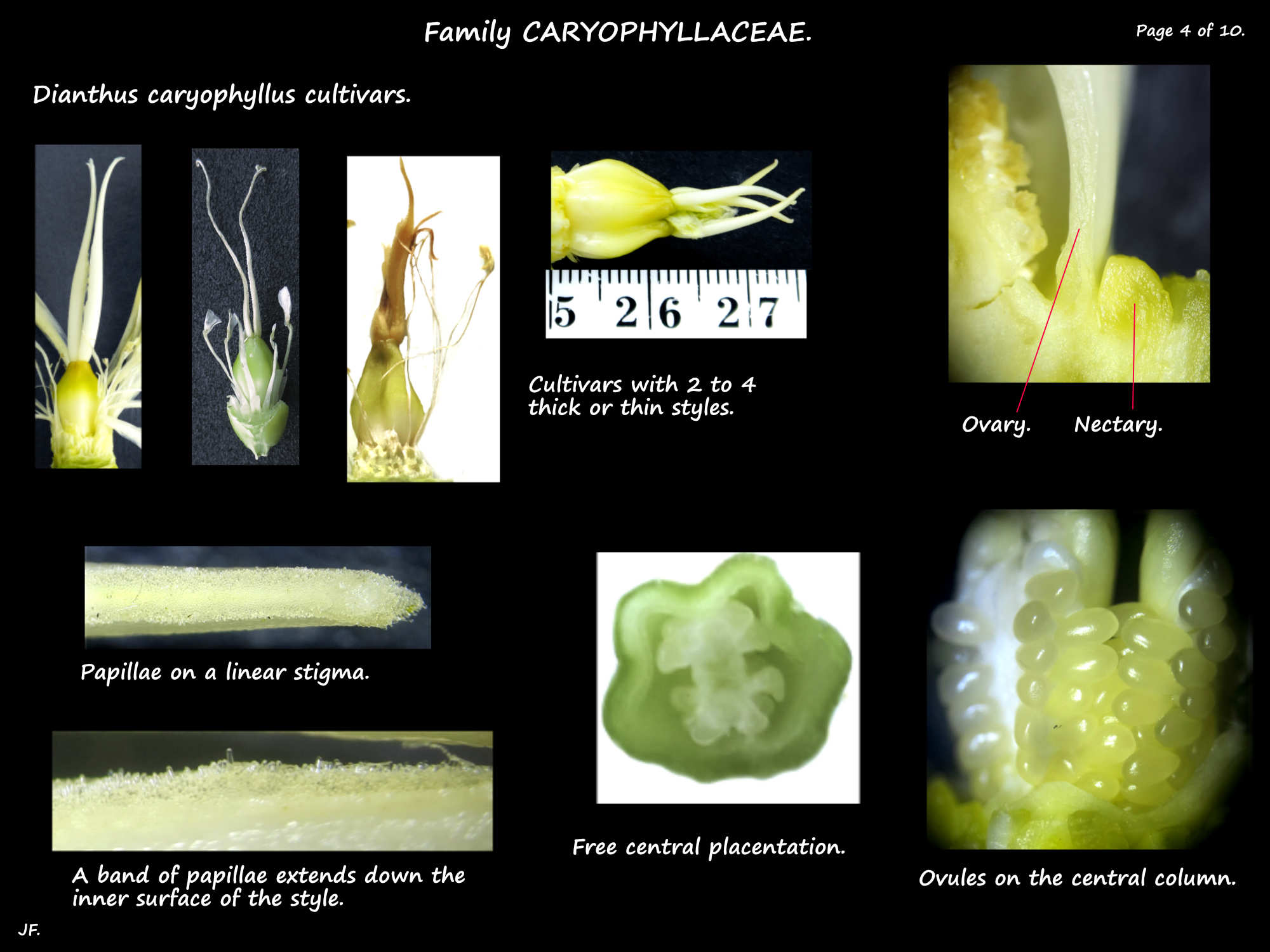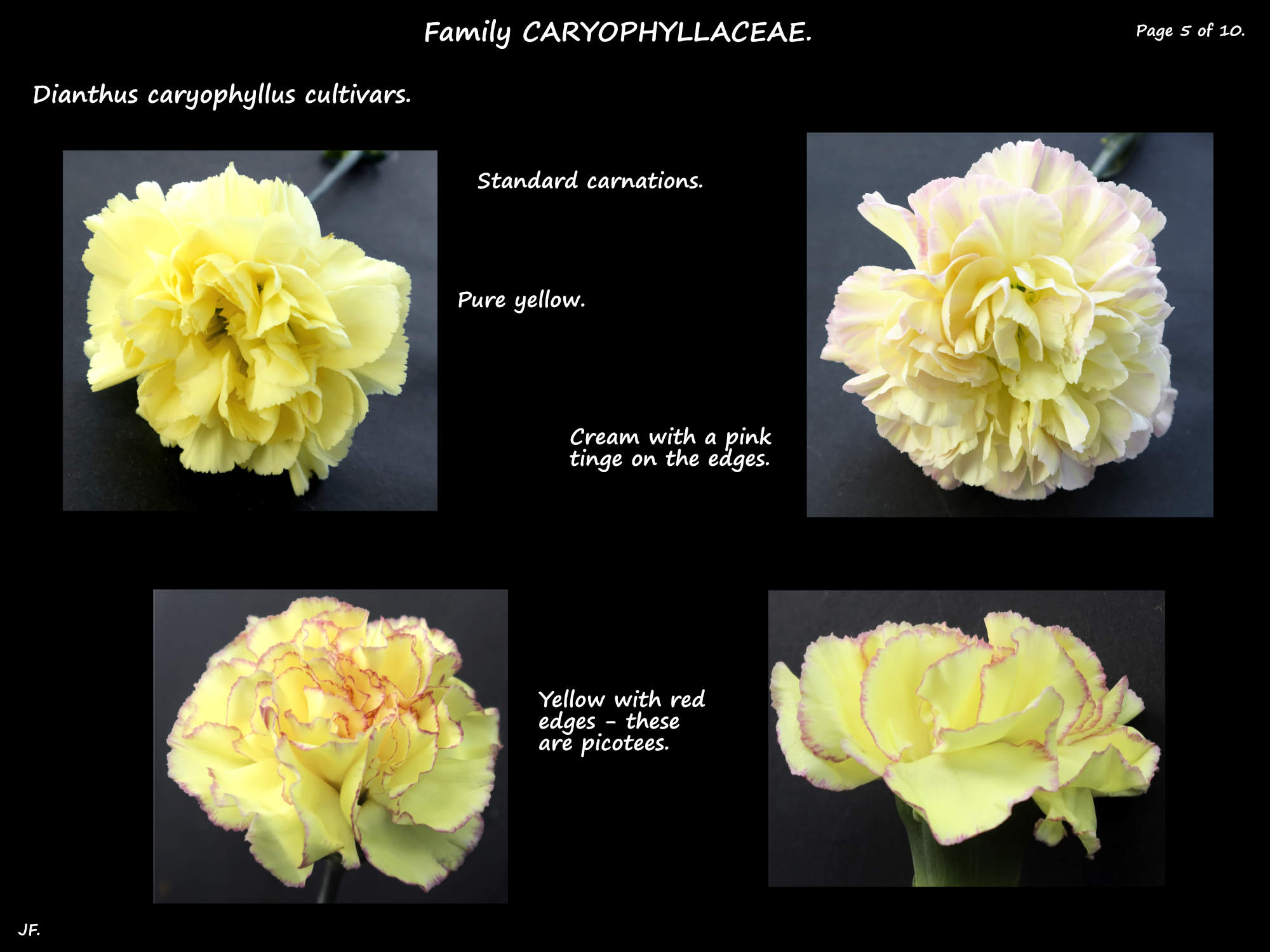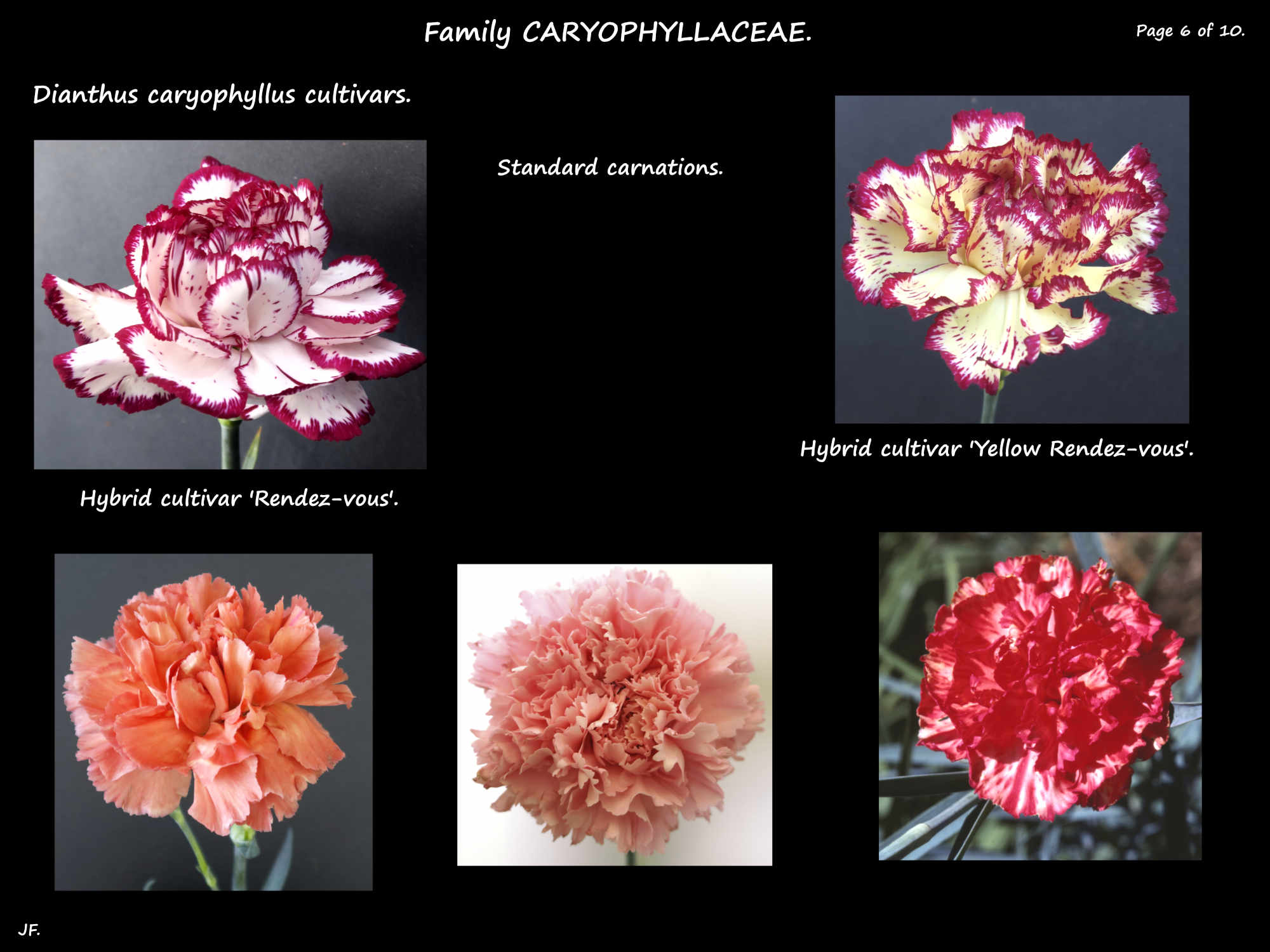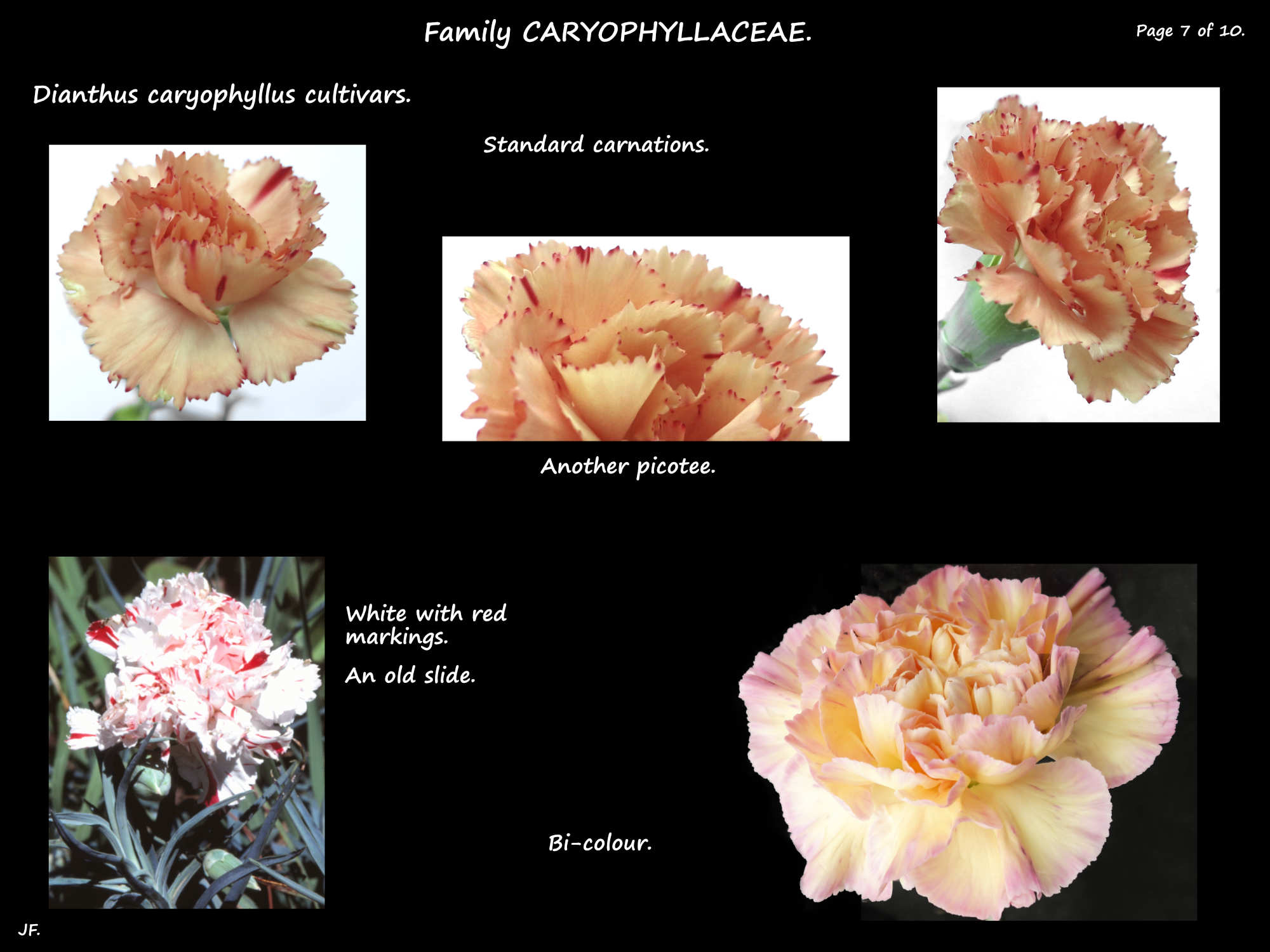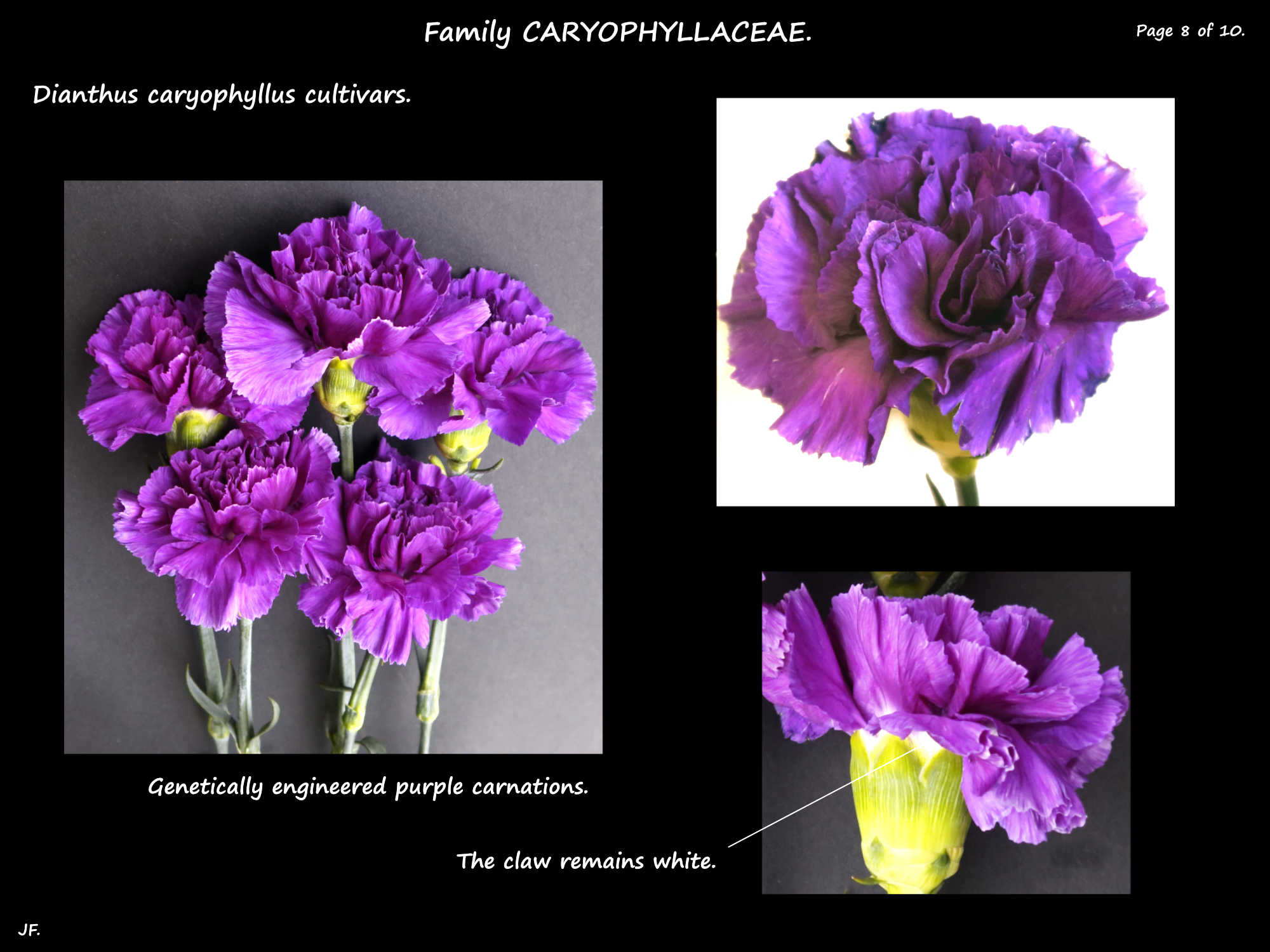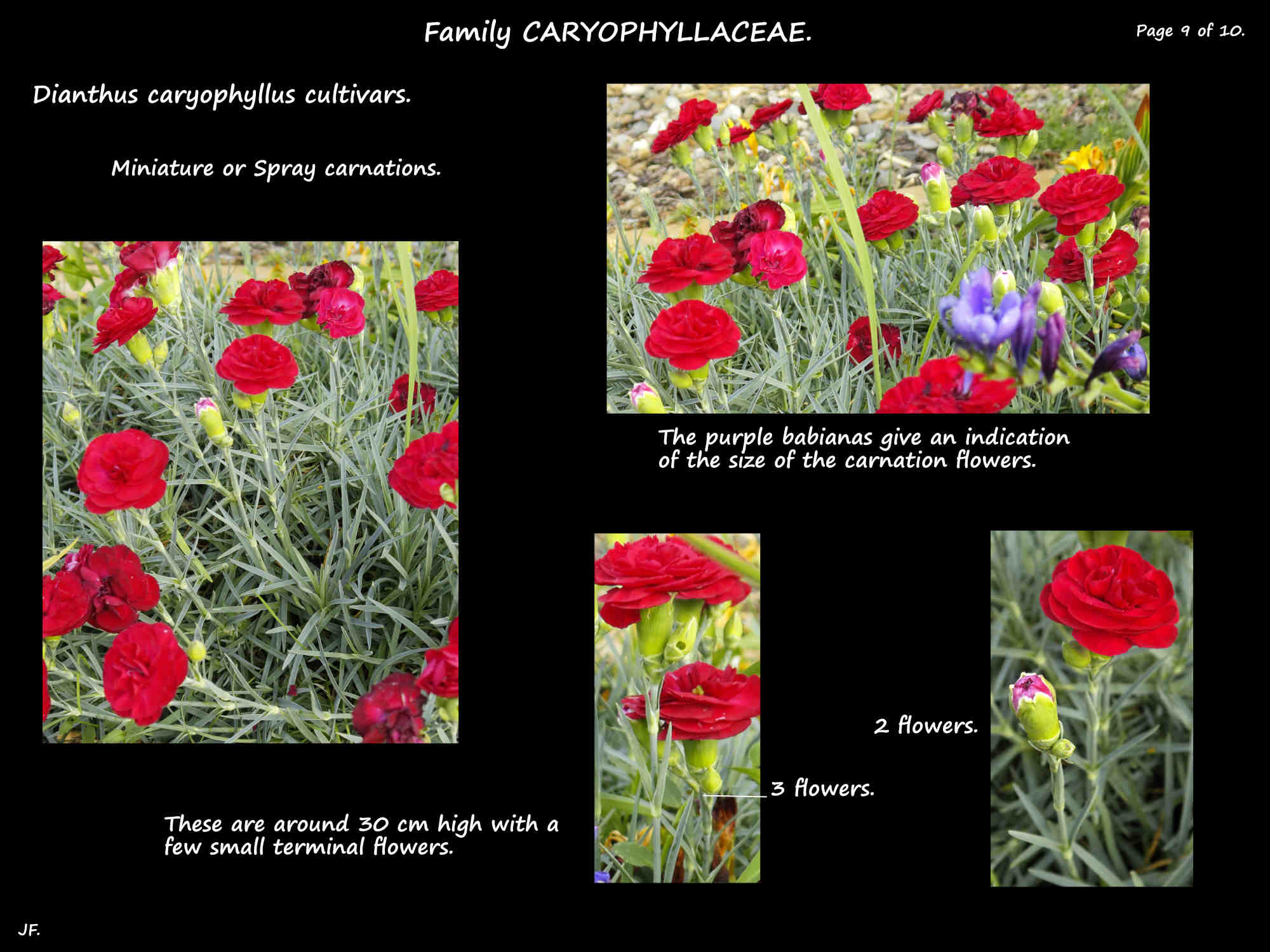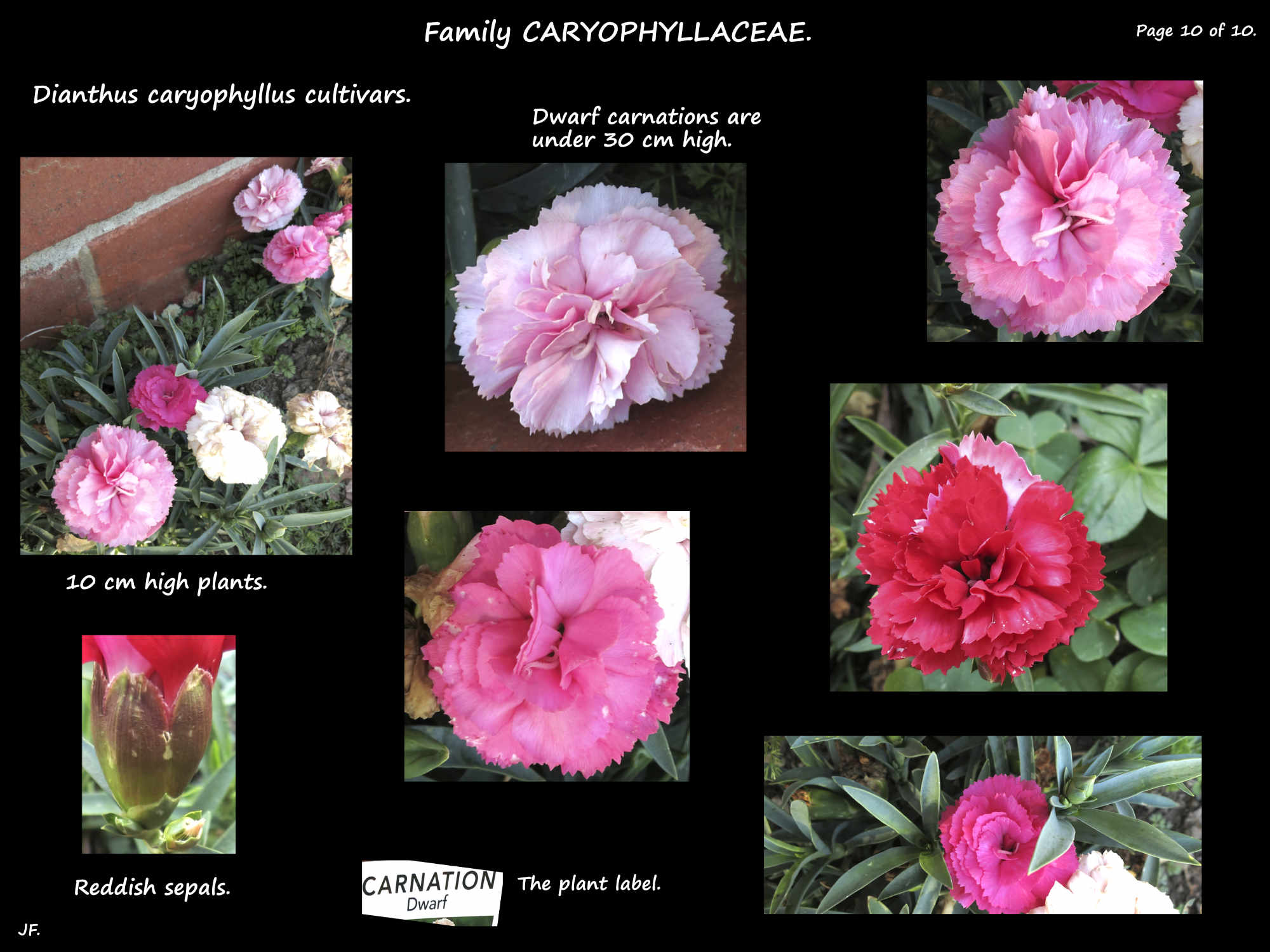Dianthus caryophyllus & its cultivars.
The Clove Pink or Grenadine is in Family Caryophyllaceae.
It, and its many cultivars are more commonly known as ‘Carnations’.
For two millennia they have been cultivated as garden plants and for cut flowers.
Mabberley notes that in 1717 D. caryophyllus was the parent of the first documented registration of a garden plant hybrid.
They are erect, evergreen, annual or perennial herbs with tap roots.
The stems, commonly 30 to 50 cm long but sometimes up to 1 m, are woody at the base.
The angled stems branch and have swollen nodes.
Stems and leaves are green or a blue or greyish-green due to the waxy coating.
The narrow leaves are opposite and decussate and widely spaced along the stem.
They have no petiole and the base sheaths the stem.
The blades are small or up to 15 cm long with a single vein.
The terminal or axillary inflorescences can be a single flower or up to five.
The bisexual flowers, up to 7 cm across and on stalks have parts in 5’s.
There are 2 (3) pairs of involucral bracts under each flower forming an epicalyx.
Around a third of the length of the calyx they have a thin membranous edge and no hairs.
The 5 sepals are fused for three quarters of their length to form a tubular calyx.
One of the 5 triangular lobes is wider and may be divided giving the appearance of 6 sepals.
The sepals are prominently ribbed on the outer surface and have hairs on the inner surface.
The white hairs are very dense around the edge of the lobes.
The sepals persist in the fruit.
There are 5 petals with a narrow claw and an ovate limb with a fringed or toothed edge.
Most cultivars seen are doubles with multiple petals in a range of colours.
Colours include many shades of red, pink, salmon, yellow and green as well as white.
Some have coloured stripes while others have a different colour on the petal edges.
Blue pigments have been genetically introduced to produce bluish-violet or purple flowers.
There are 10 stamens in two whorls with dorsifixed anthers opening inwards via slits.
Cultivars may have few or no fertile stamens.
The ovary has a single locule with free axile placentation.
The 2 separate styles have stigmas with papillae.
The fruit are capsules.
Modern hybrids are mostly between D. caryophyllus and either D. chinensis, D. gratianopolitanus or D. plumarius.
They may be divided into:
Standard carnations or sims with one large flower on each 45 to 60 cm (1m) long stem.
These are the types seen in the cut flower trade.
Miniature, mini or spray carnations are around 30 cm high with 5 or 6 small flowers per stem.
Dwarf or midi carnations are under 30 cm high and have smaller flowers.
There may be one flower on each stem +/- flowers on side branches.
J.F.
